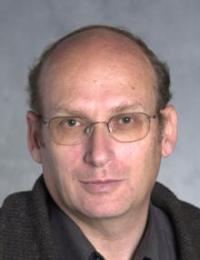- Speaker
- Prof. Eli Pollak
- Weizmann Institute of Science, Israel
- Abstract
Recent experimental measurements of the transition path time distributions of proteins moving from the folded to the unfolded state and vice versa, presented theory with challenges. Analysis of the results suggested barrier heights that are much lower than the free energies of activation of the observed transitions. Secondly, the theory used was based on a strong friction model, why is such a model at all applicable to the protein folding problem? A different aspect is the question whether one can use the transition path time distribution in a quantum mechanical context, to obtain insight into some of intriguing questions such as tunneling and quantum reflection times.
In this talk, I introduce the paradigm of a transition path barrier height for the protein folding problem, and show that it should be smaller than the activation energy, resolving the low barrier height puzzle. The transition path distribution for a parabolic barrier is derived for arbitrary memory friction [1].In the second phase, the quantum mechanical transition path time probability distribution will be discussed [2-4]. Highlights include a vanishing mean tunneling time at the parabolic barrier crossover temperature and that increasing the length of the path traversed decreases the mean transition time. The transition path time distribution is used to define a tunneling flight time and show that it vanishes for tunneling through an Eckart and square barrier [5]. A study of quantum reflection reveals the role of coherence of the incident wavepacket on the tunneling times [6]. Finally, using time averaging it becomes possible to predict the momentum and position of a single quantum particle with an uncertainty which is less than ħ/2 [7] and to derive a time energy uncertainty relation.
References:
[1] E. Pollak, The transition path time distribution and the transition path free energy barrier, Phys. Chem. Chem. Phys. 18, 28872 – 28882 (2016). DOI: 10.1039/C6CP05052B
[2] E. Pollak, Quantum Tunneling - The Longer the Path the Less Time it Takes, J. Phys. Chem. Lett. 8, 352 (2017).
[3] E. Pollak, Transition path time distribution, tunneling times, friction and uncertainty, Phys. Rev. Lett. 118, 07041 (2017).
[4] E. Pollak, Thermal quantum transition path time distributions, time averages and quantum tunneling times, Phys. Rev. A 95, 042108 (2017).
[5] J. Petersen and E. Pollak, Tunneling flight time, chemistry and special relativity, J. Phys. Chem. Lett. 8, 4017-4022 (2017).
[6] J. Petersen and E. Pollak, Quantum Coherence in the Reflection of Above Barrier Wavepackets, J. Chem. Phys. 148, 074111 (2018).
[7] E. Pollak and S. Miret-Artés, Time averaging of weak values - consequences for time-energy and coordinate-momentum uncertainty, New J. Phys., 10.1088/1367-2630/aad020, (2018).
- About the Speaker
Eli Pollak completed his PhD at the Hebrew University, Jerusalem, Israel in 1976. He has been on the staff of the Chemical Physics Department, Weizmann Institute of Science since 1979, becoming full professor in 1990 and Chair of the Department from 2010-2017. He initiated the formal ties between the Israel Science Foundation and the National Natural Sciences Foundation of China in 2006.
- Date&Time
- 2018-12-25 2:00 PM
- Location
- Room: A203 Meeting Room




